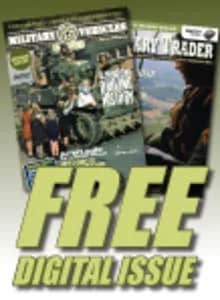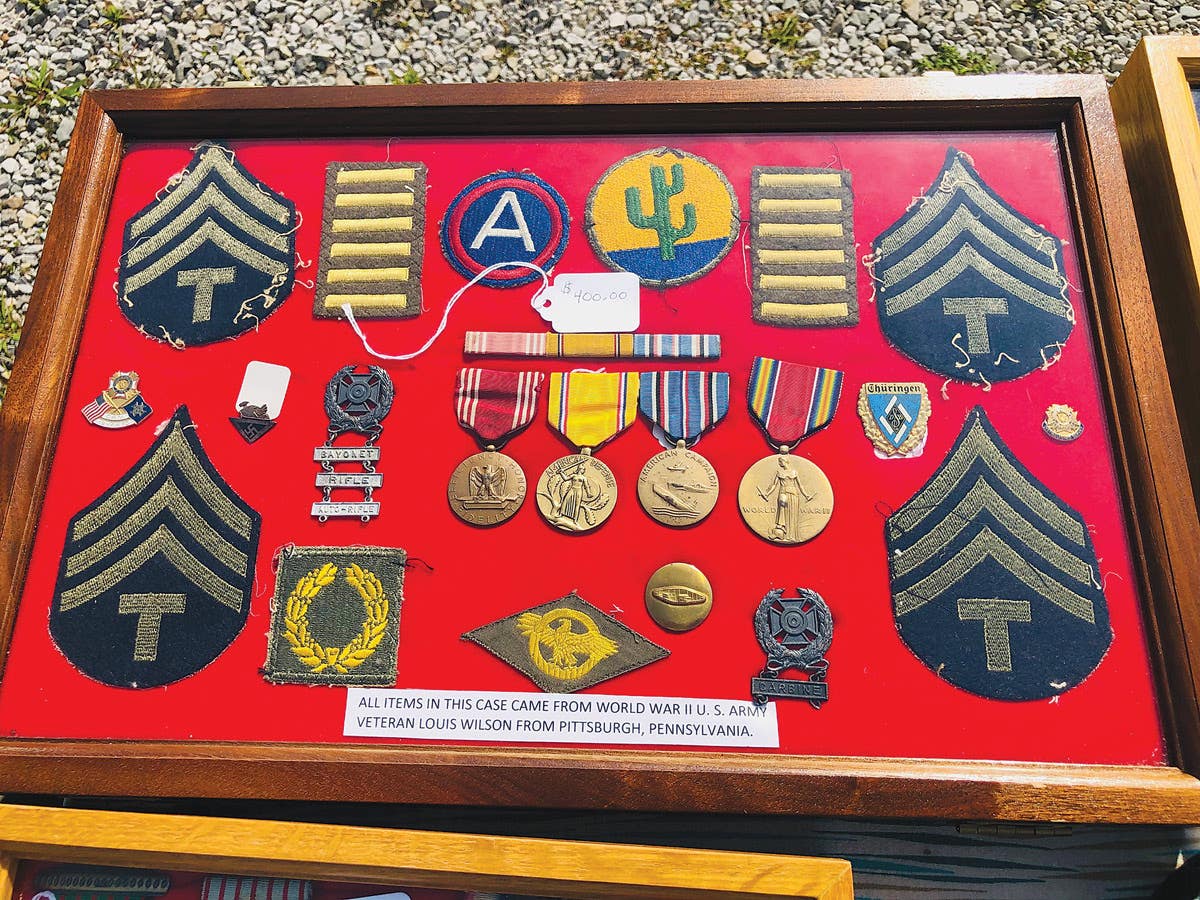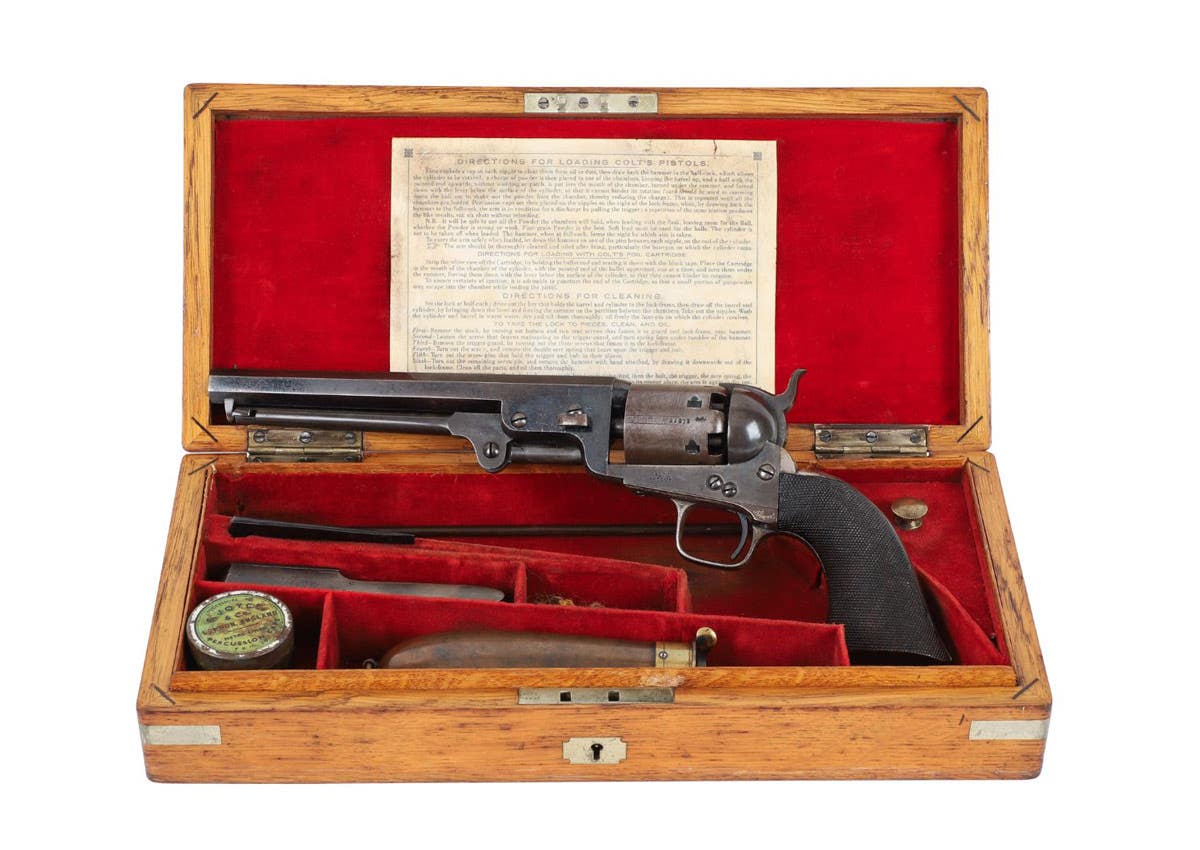‘Erkennungsmarken’: Dog tags reveal another side of WWII German military
A look at dog tags of the German Army in WWII.
U.S. Army soldier’s tags and a French tag from World War I, along with a U.S. Army woman’s set from WWII. Chris William
Identifying the brave men lost and missing in combat has been a concern for thousands of years as soldiers fought in history’s many bloodied battlefields for glory, honor, defense and gain. To help identify them in the event that they fell in battle, common soldiers devised various ways of marking themselves so that their fate would not remain a mystery to their families and comrades. The ancient Spartans wrote their names on sticks tied to their wrists before engaging in the battles for which they grew famous. During the Roman conquests, legionnaires wore “signaculum”, a lead disk hung from their necks with their personal and legion names, or were tattooed with a series of dots, signifying their legion.
Centuries later in the mid-1800s, a variety of devices were utilized by different countries to help identify their wounded and dead. Chinese combatants wore wooden ID tags attached to their belts, while soldiers of the American Civil War wrote their names on paper notes attached to their tunics, or painted individual identification on their equipment. They would later purchase and wear commercially manufactured discs embellished with their engraved names, patriotic sayings and images. The Austro-Prussian war of 1866 brought the introduction of standard issue identification tags to the Germanic warriors, which at first were deemed unlucky to wear by those going into battle (seen as signifying their impending deaths) and were only reluctantly used. By April, 1869, the Prussian “Instruktion uber das Sanitatswesen der Armee im Felde” (Instruction on the medical corps of the army in field) began issuing “Erkennungsmarke” (recognition mark) tags to all soldiers in the field for mandatory wear. By the beginning of the Franco-Prussian war of 1870, German soldiers were ordered to carry their “Hundenmarken” (dog tags). This nickname was given by the combatants, seeing the ID’s as reminiscent of disks worn by licensed canines in the larger cities (and as themselves as the dogs).
The standard issue German Erkennungsmarken of the First World War were oval shaped cut out metal disks with two holes drilled through the top enabling them to be suspended from a cord around the wearers’ necks. The tops and bottoms of the tags had matching information stamped in a variety of lettering which included the soldiers’ names, dates of birth and unit numbers. Tags issued at home bases generally had the information stamped in opposing directions on both halves so that it could be read whether the tag was viewed right-side up or upside down. Field made tags, hastily constructed for expediency’s sake, often had the lettering stamped in the same direction on both halves, so that the tag needed to be turned around if the writing being read was upside down. A narrow groove crossed the center of each disk which allowed the metal to be snapped in two: one half being returned to headquarters to record the soldier’s fate, and the other half either remaining with the wounded man during transport to medical facilities, or with his body for further identification before burial.
When World War II began in 1939, German “Heer” (army), “Luftwaffe” (air force) and “Waffen SS” (armed SS) tags were manufactured in the same oval shape as those previously issued, but stamped out in 70 X 50 mm aluminum blanks. By 1941, the stores of aluminum tags had been depleted, and new disks were formed from zinc, being far less complex and costly to produce. By the later part of 1944, these changed for the final time with disks being constructed from steel. “Kriegsmarine” (navy) Erkennungsmarken were produced in a smaller 50 X 32 mm size, stamped in aluminum and plated with a thin gold colored layer.
Unlike those of World War I, the World War II Wehrmacht tags no longer included the soldier’s name or date of birth. Instead, they listed his depot and roster numbers, blood type (though some excluded this) and “EK”, (Erkennungmarke number) which was also recorded in his “Soldbuch” (the basic carried military book). As losses occurred within a unit’s ranks, soldiers brought in as replacements often had their dog tags marked with an “Ers”, (“Ersatz” meaning replacement troop).
According to regulations, Erkennungsmarken were to be worn around the neck suspended from an 80cm field grey cord. This rule was not always followed as some soldiers sometimes carried their disks in their pockets, packs or wallets, making their identification much more difficult in the event of their being severely wounding or killed.
German soldiers were not the only men to wear dog tags during the Third Reich. Members of the “Reichsarbeitsdienst” (RAD – national labor service), the “Organisation Todt” (OT – engineering and construction corps) and other police and paramilitary groups were issued identification disks as part of the overall militaristic structure (“A country within a military camp”) that enveloped many of the organizations in Hitler’s Germany. When the war entered the German heartland, men of these groups often found themselves engaged in actual combat as the country collapsed around them, leaving thousands of the dead needing to be identified.
meaning that he may have lost his original tag and been transferred to a new unit, thereby given a new tag number. Chris William
Today, many lost warriors of the Third Reich are still being discovered across the European continent, wherever German soldiers fought and died. Historians, relic hunters and construction workers have unearthed thousands of forgotten graves, with some still containing Erkennungsmarken among the deteriorating remains which help identify the lost souls buried there. Finding these men can bring final peace to their remaining families, even 80 years after Hitler’s war of conquest was brutally brought to an abrupt halt, giving birth to the new Germany of today.
The lettering both top and bottom runs the same way, and there is an over stamped mistake (“M”) on the bottom half. Chris William
at “Gross-Rosen”. (Mark Pulaski collection) Chris William
by the wearers as the Allies discovered the mass murders that had taken place during the SS’ “Final Solution”. Chris William
Chris William has been a long-time member of the collecting community, contributor to Military Trader, and author of the book, Third Reich Collectibles: Identification and Price Guide.
"I love to learn new facts about the world wars, and have had the good fortune to know many veterans and collectors over the years."
"Please keep their history alive to pass on to future generations".







